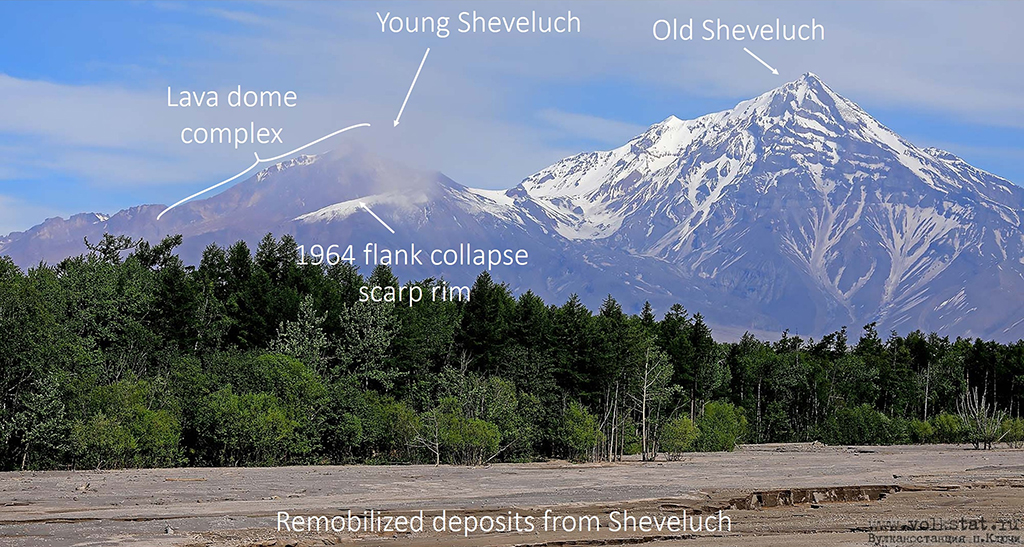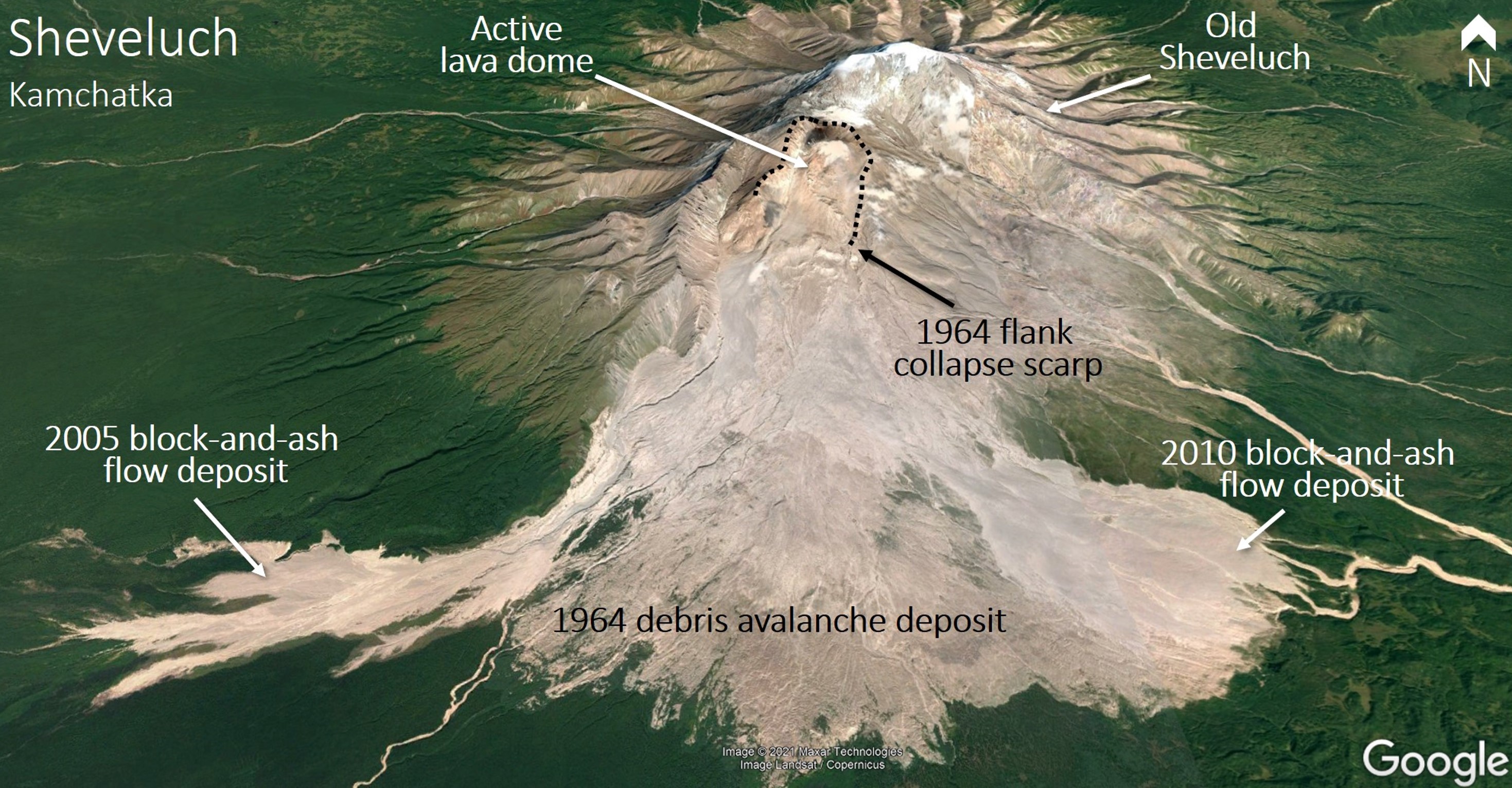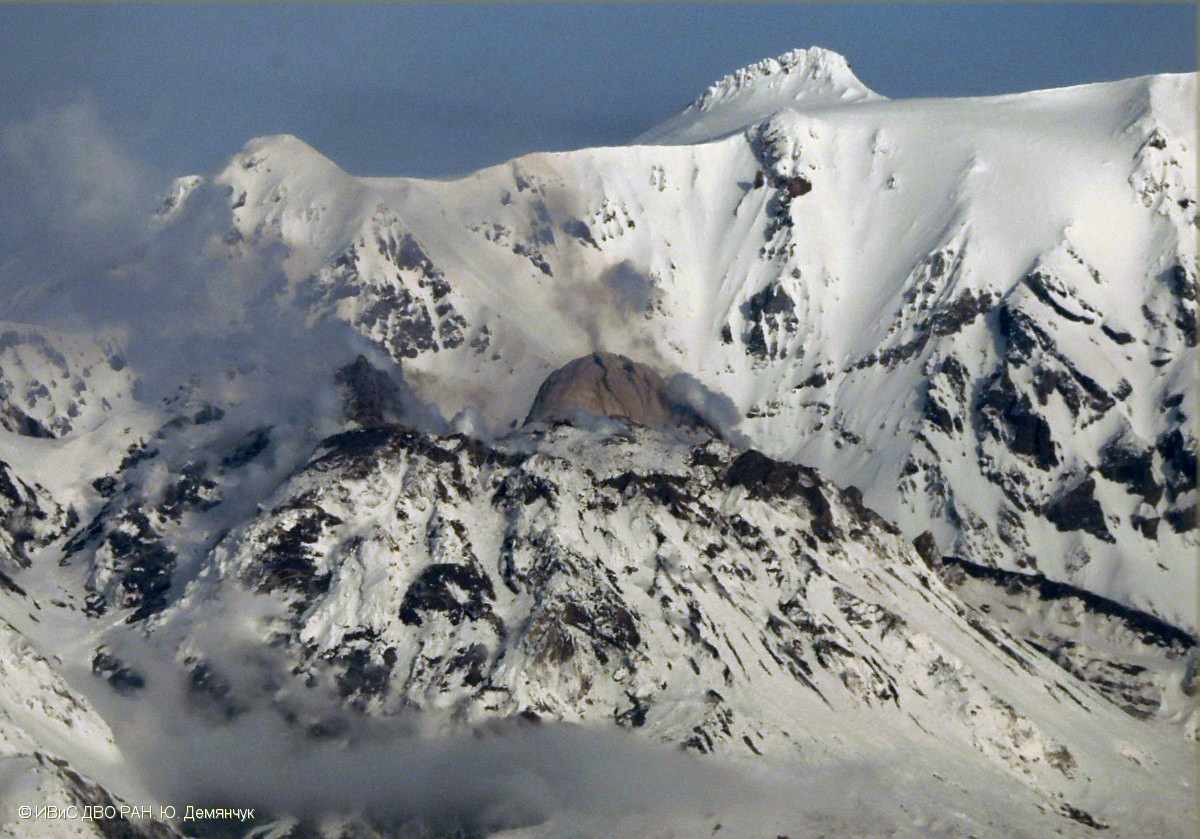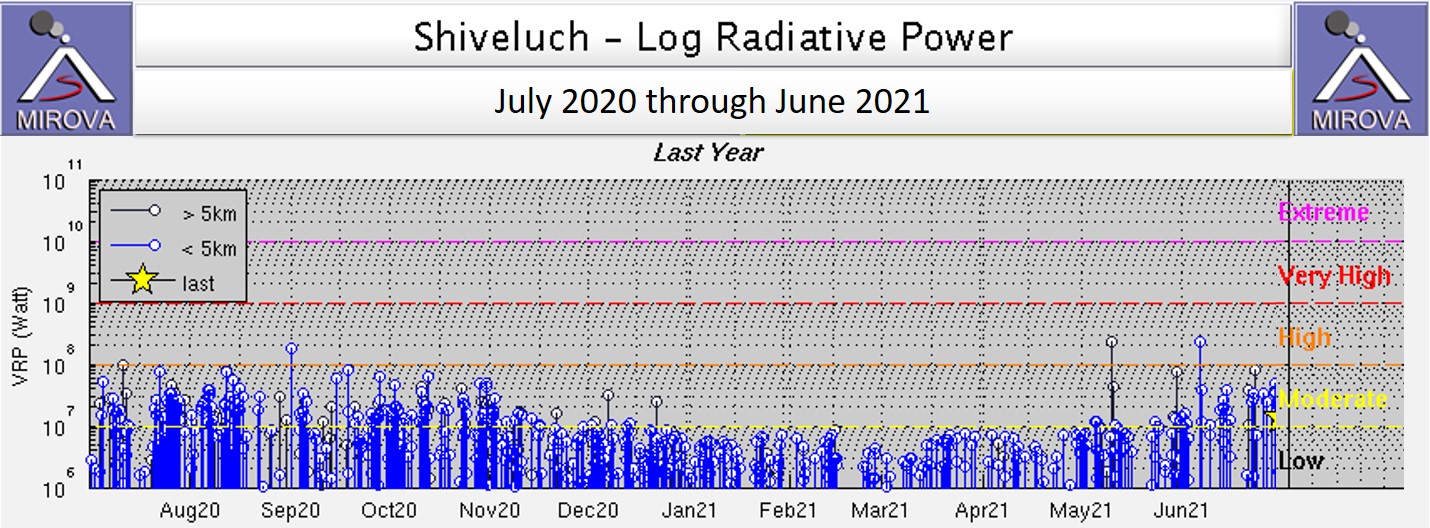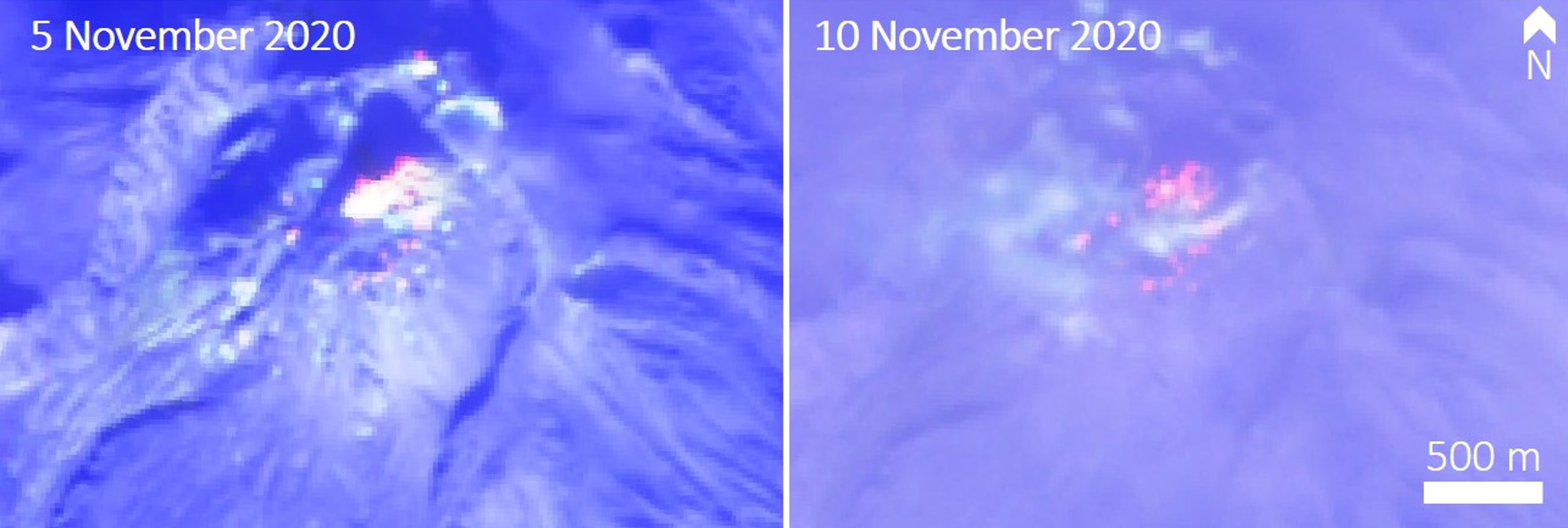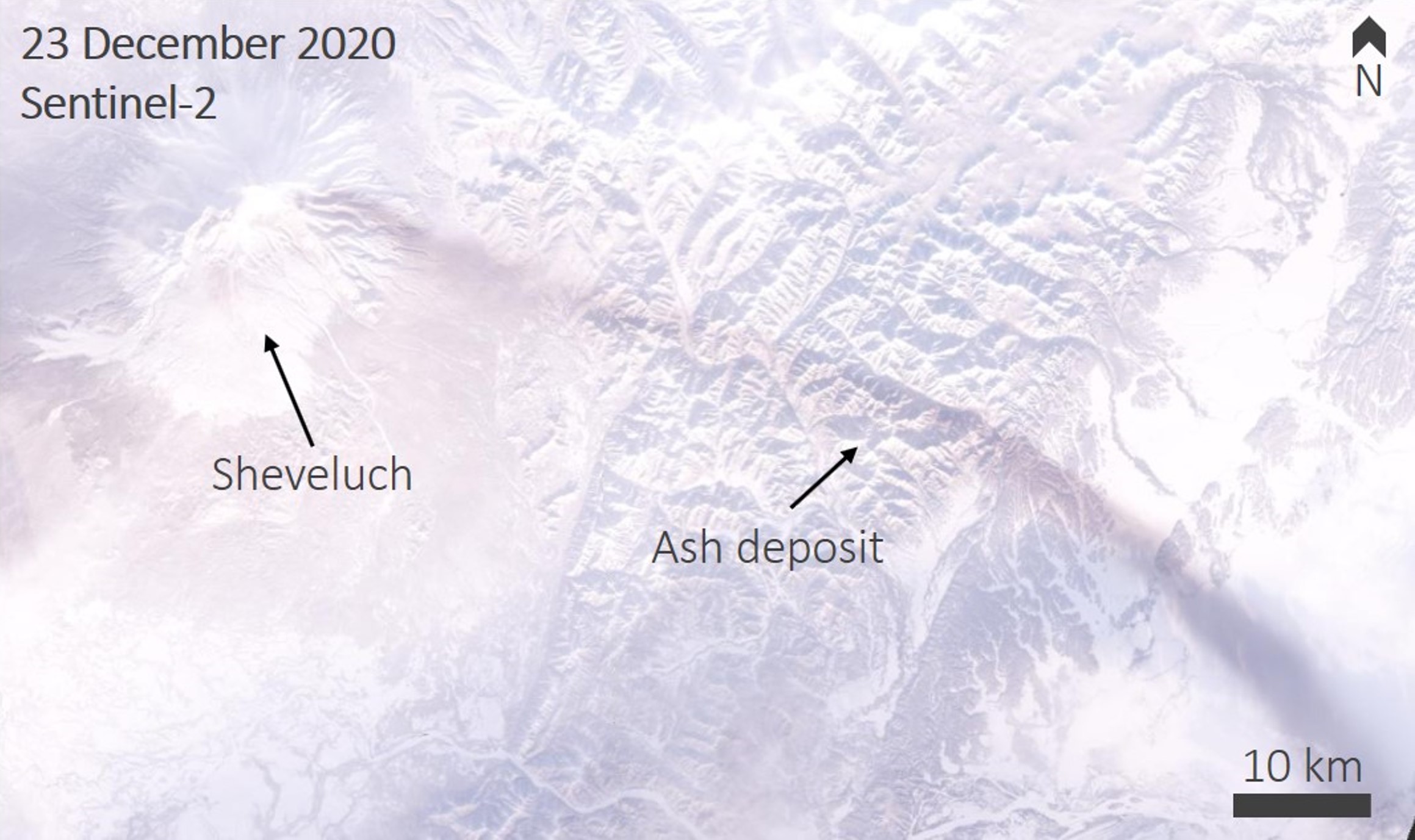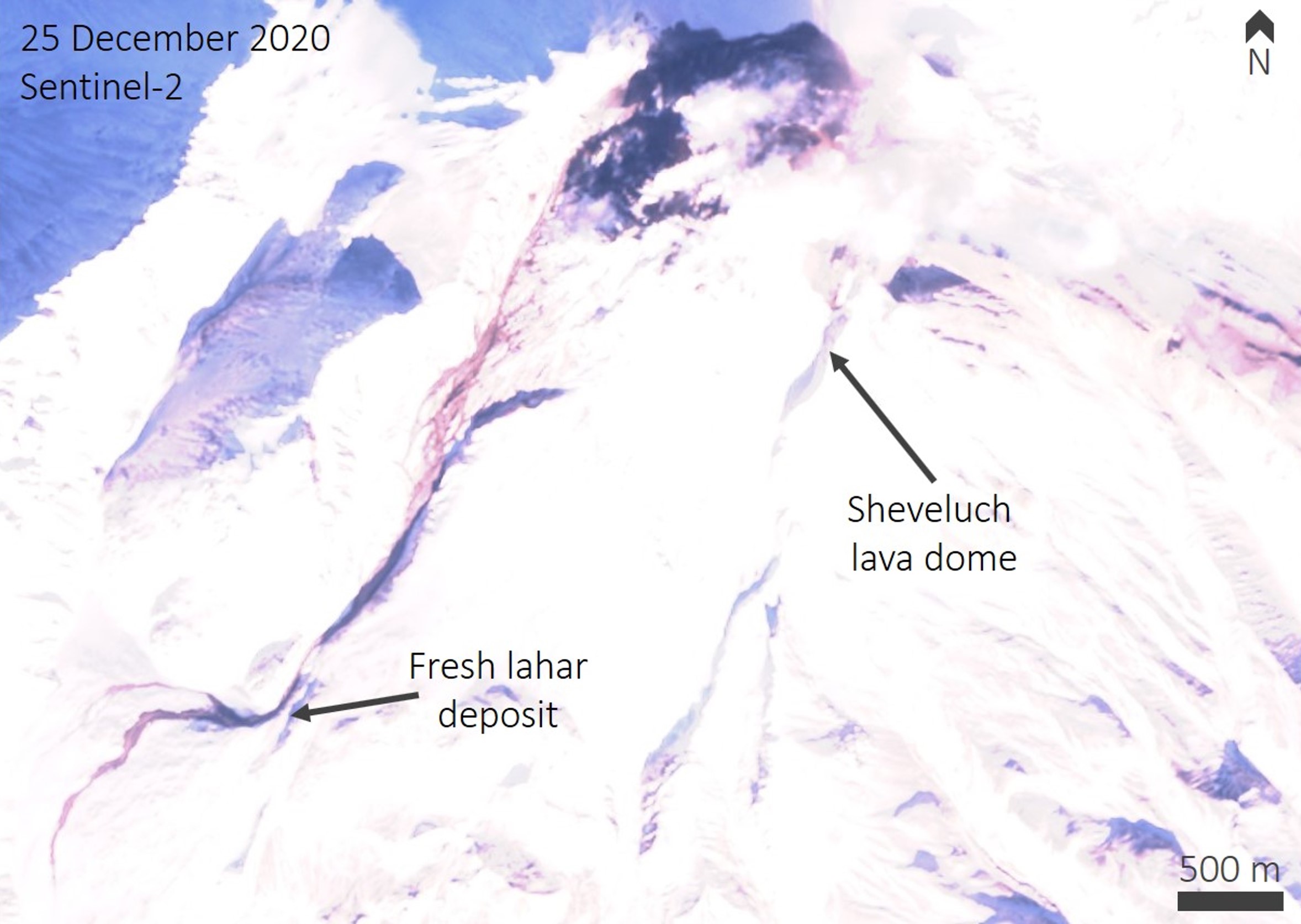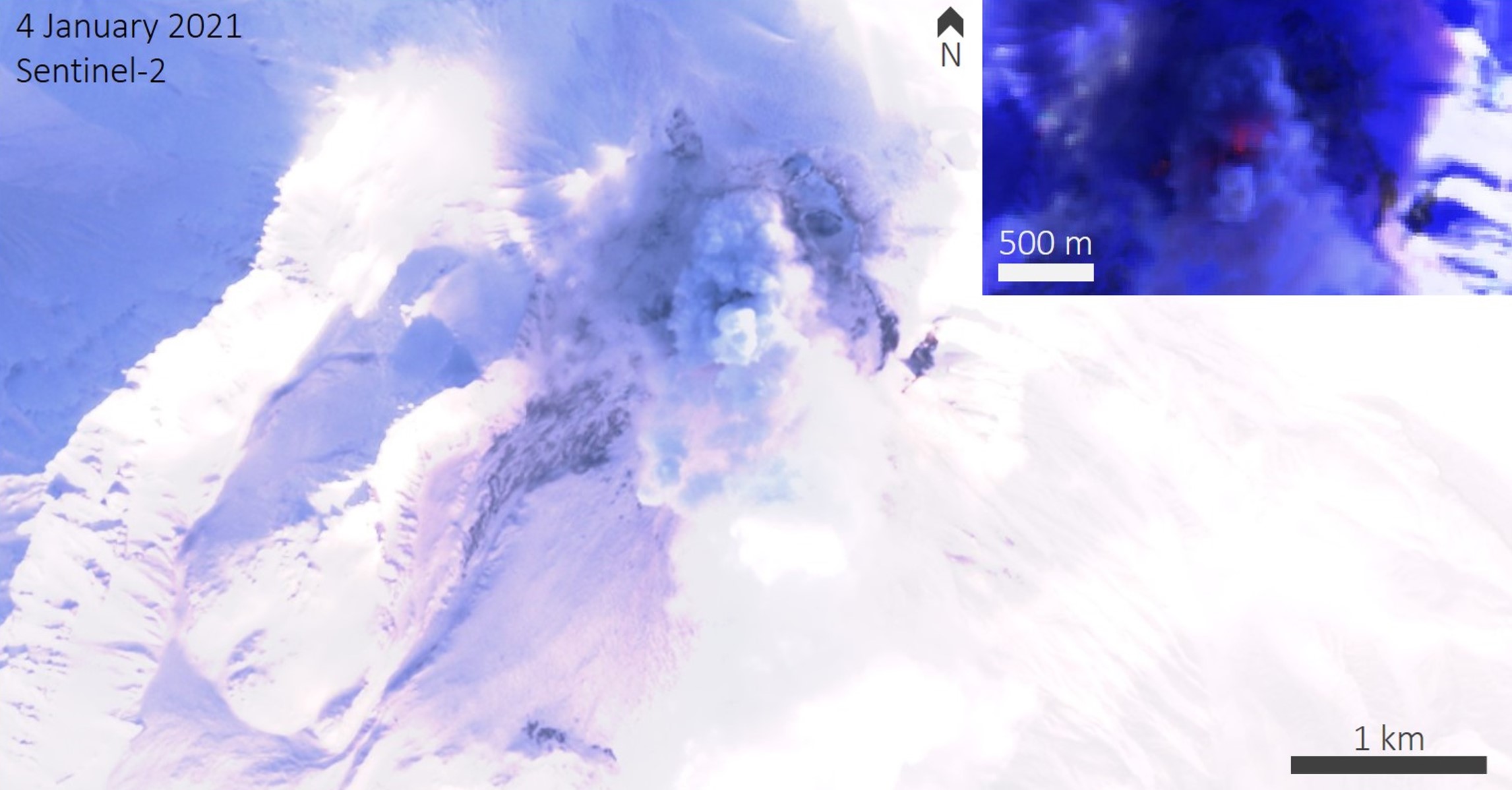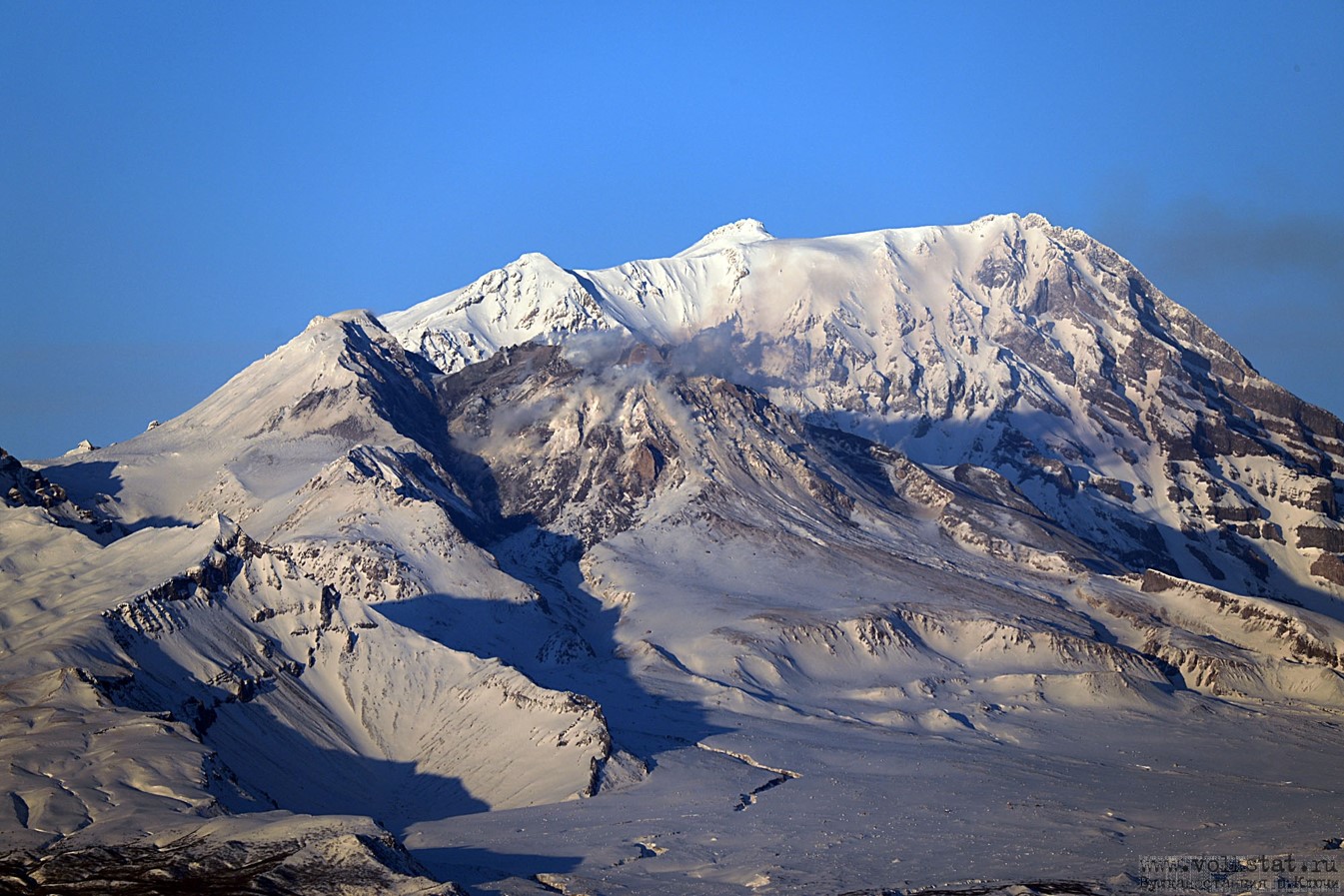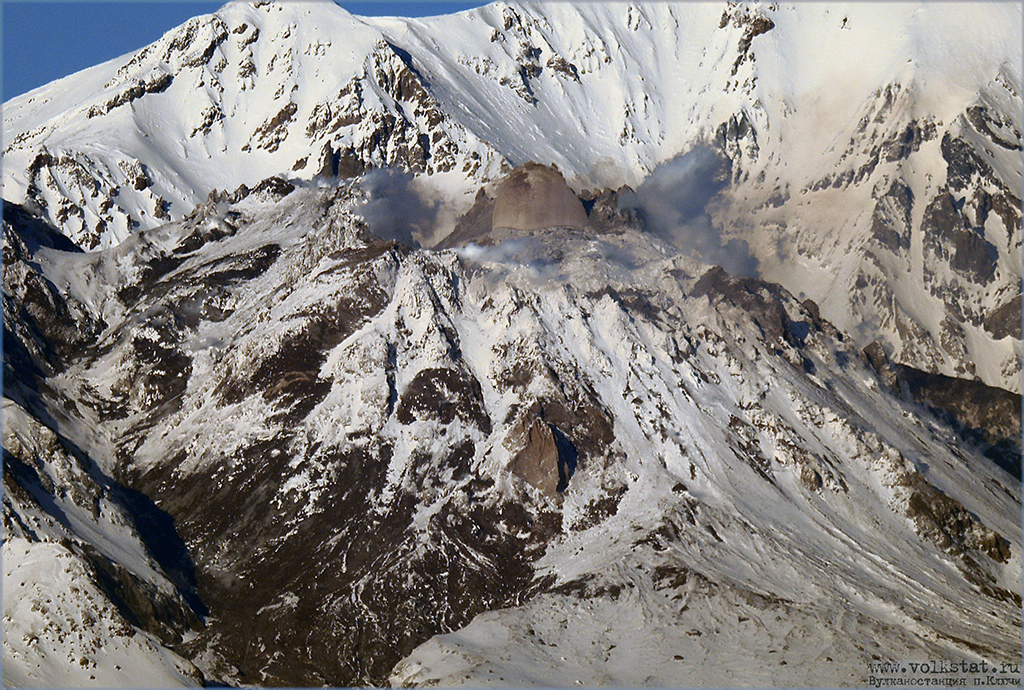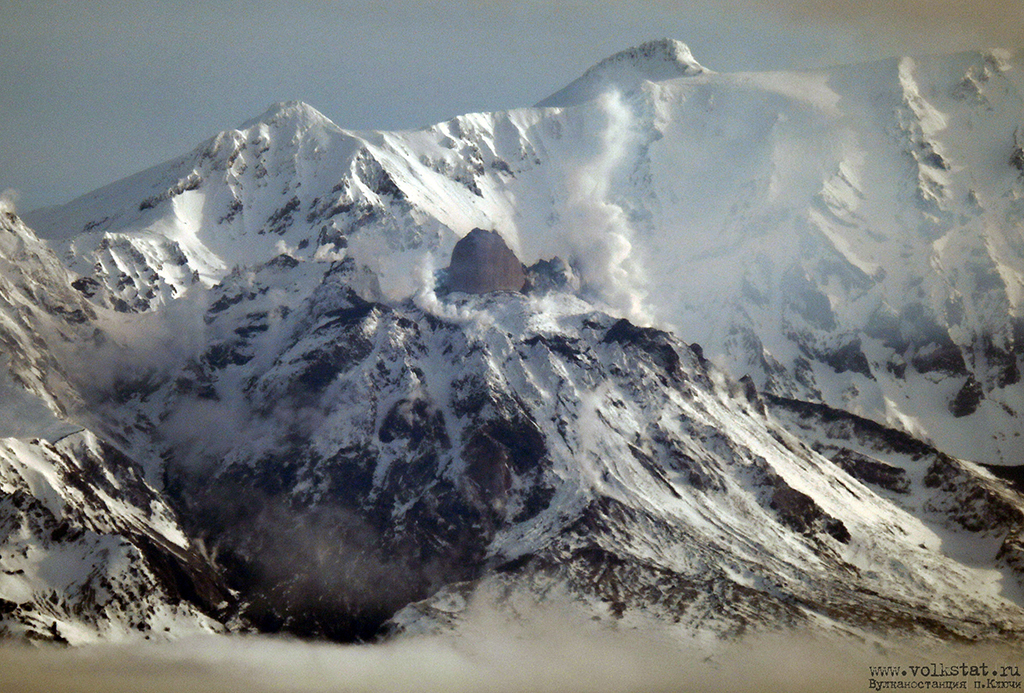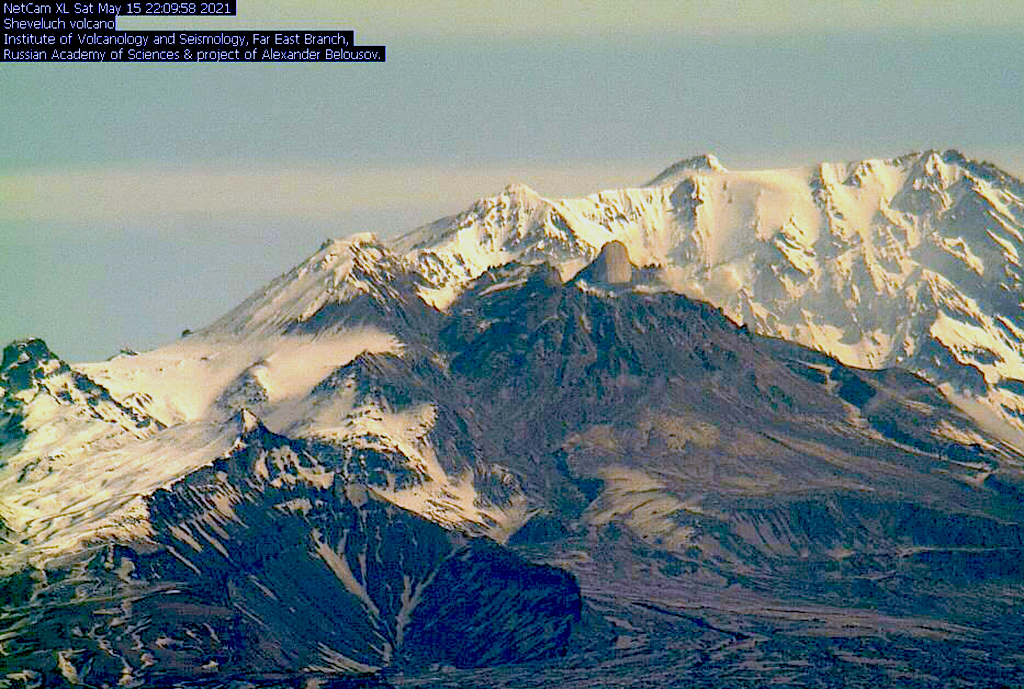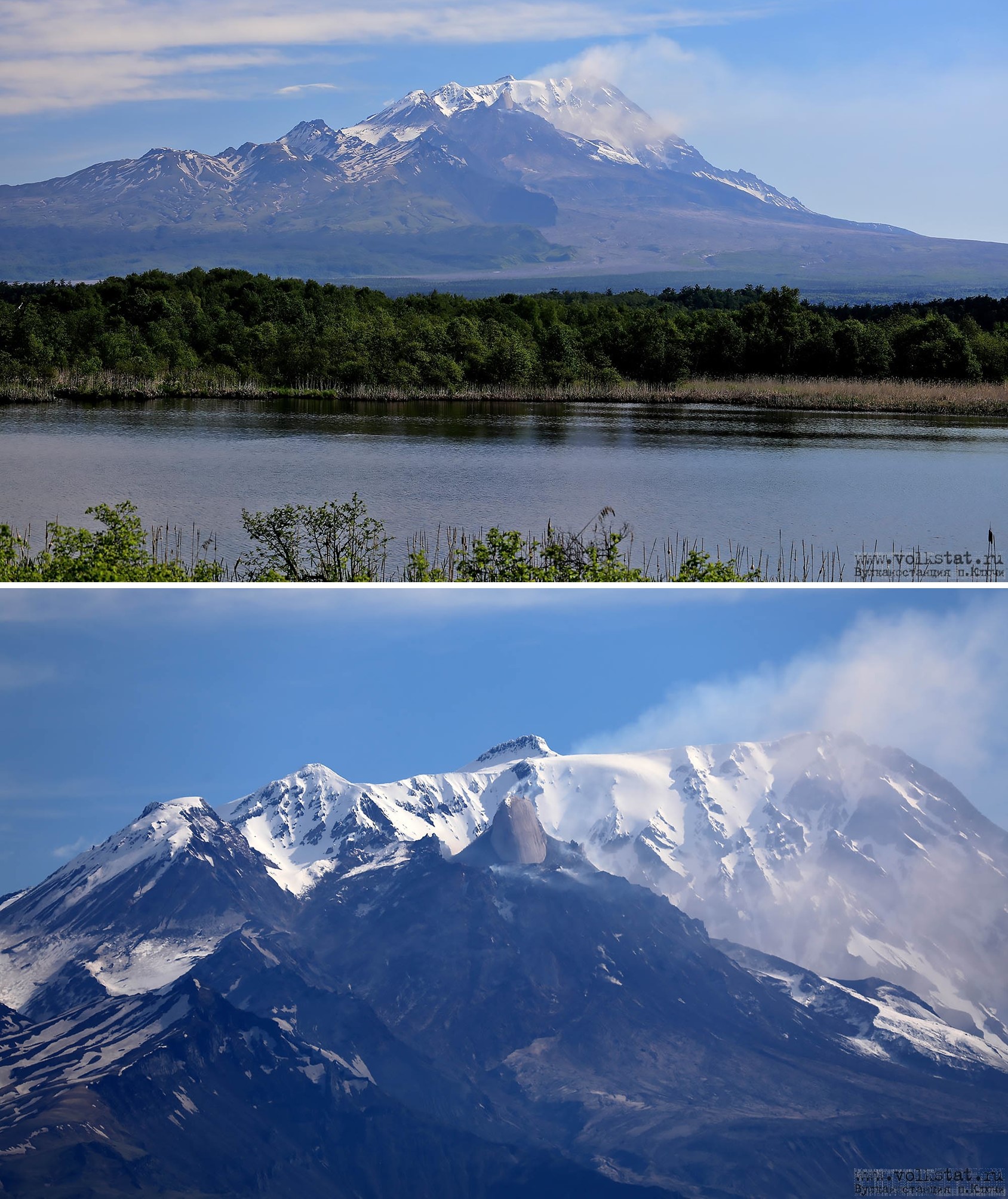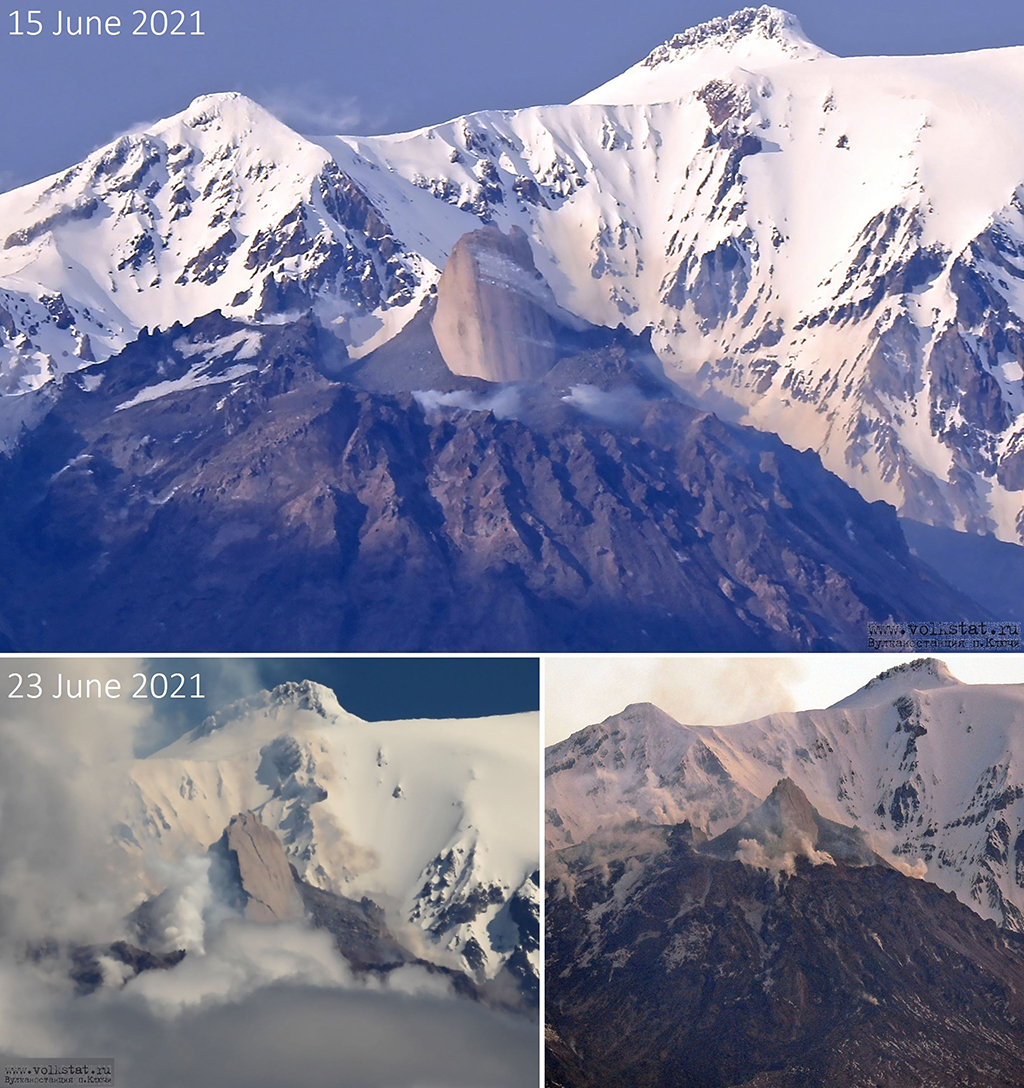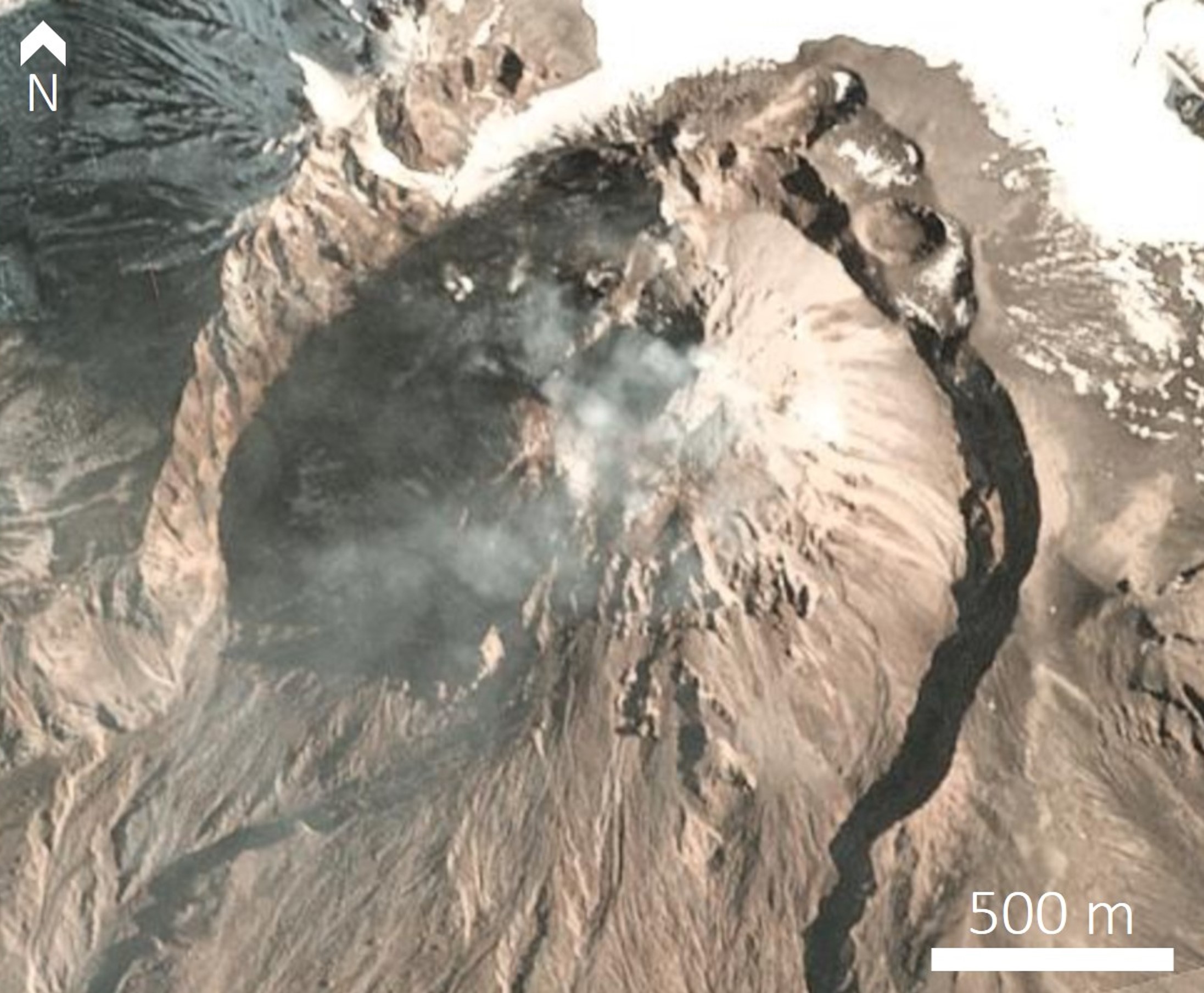Report on Sheveluch (Russia) — July 2021
Bulletin of the Global Volcanism Network, vol. 46, no. 7 (July 2021)
Managing Editor: Edward Venzke.
Edited by Janine B. Krippner.
Sheveluch (Russia) Continued activity during November 2020-June 2021 produced a whaleback dome and occasional ash plumes
Please cite this report as:
Global Volcanism Program, 2021. Report on Sheveluch (Russia) (Krippner, J.B., and Venzke, E., eds.). Bulletin of the Global Volcanism Network, 46:7. Smithsonian Institution. https://doi.org/10.5479/si.GVP.BGVN202107-300270
Sheveluch
Russia
56.653°N, 161.36°E; summit elev. 3283 m
All times are local (unless otherwise noted)
Sheveluch (also spelled Shiveluch) is a frequently active volcano consisting of Old Sheveluch and Young Sheveluch, with a large lava dome complex in the open crater that formed during a flank collapse in 1964 (figures 57 and 58). Typical activity consists of lava dome growth with intermittent ash emission and collapse events that produce block-and-ash flows. This report summarizes activity from November 2020 through June 2021 and is based on Kamchatka Volcanic Eruptions Response Team (KVERT) and Institute of Volcanology and Seismology, Far Eastern Branch, Russian Academy of Sciences (IVS FEB RAS) reports and photographs, and satellite data. During this time activity consisted of lava dome growth, active fumaroles producing gas and steam, and visible incandescence of the eastern dome area when not obscured by clouds. Before this period, on 28 September 2020, a “whaleback” dome or lava spine was seen in the upper eastern part of the large dome that was given the name “Dolphin” by KVERT (BGVN 45:11). An image taken on 31 October showed the dome fracturing with new lava extrusion.
Frequent thermal anomalies were detected throughout November 2020-June 2021, with a decrease in energy output starting in November (figure 60). This was also seen in thermal satellite images when the active dome area was not obscured by clouds (figure 61). A gas-and-steam plume produced on the 30th dispersed 60 km NE. Avalanches of hot material from the growing dome area occurred through the month.
Low-level activity continued in early December, with avalanches of hot material from the dome removing a significant part of the whaleback by the 8th (figure 62). On the 22nd an explosion produced an ash plume up to 8 km altitude that dispersed E (figure 63), and a satellite image acquired the following day showed the ash deposit across the snow (figure 64). Another explosive event on the 24th again sent a plume to 8 km; both plumes reached around 625 km E. A satellite image acquired on 25 December showed fresh material across the dome and a lahar, likely from hot blocks melting snow (figure 65). Slightly lower ash plumes were erupted on the 29th, reaching 7 km altitude, with the latter plume drifting 250 km W.
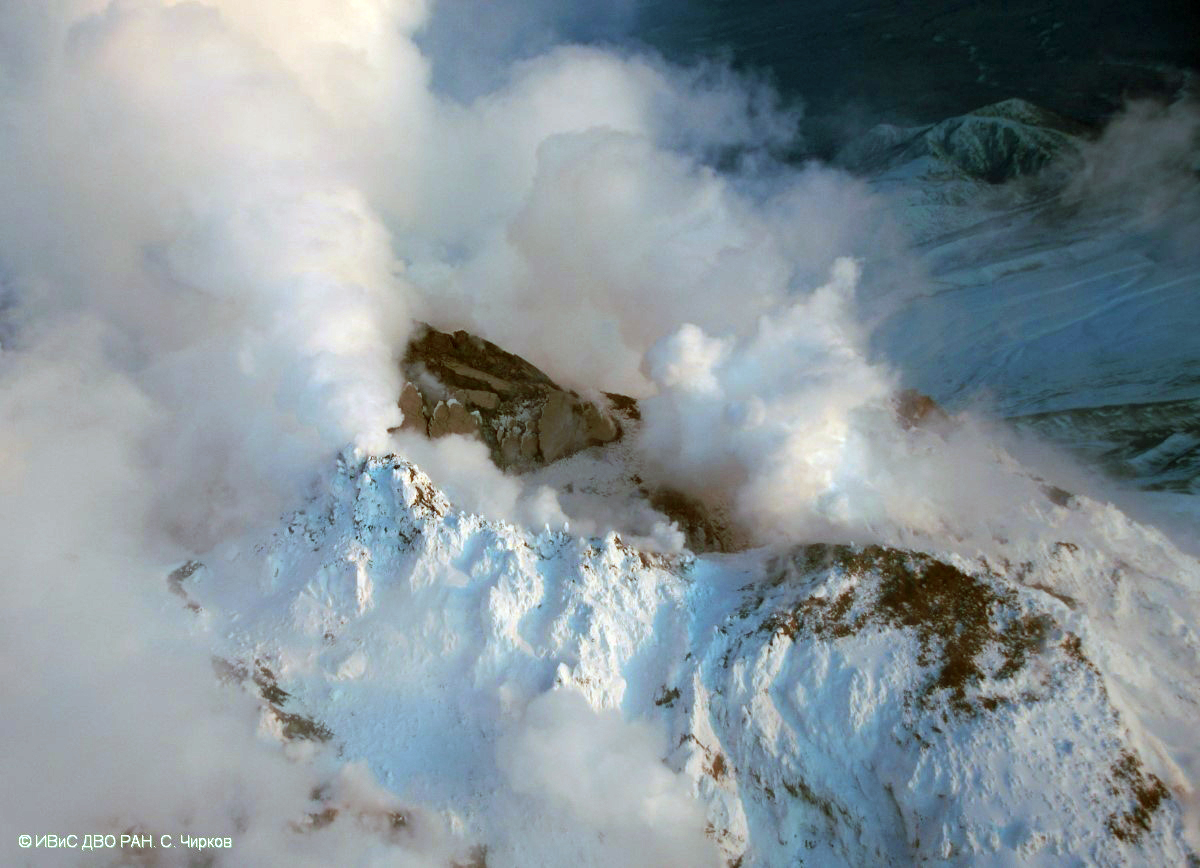 |
Figure 62. The remnants of the “Dolphin” whaleback lava dome in the eastern part of the larger Sheveluch lava dome complex is shown in this 8 December 2020 photo. Courtesy of S. Chirkov, IVS FEB RAS. |
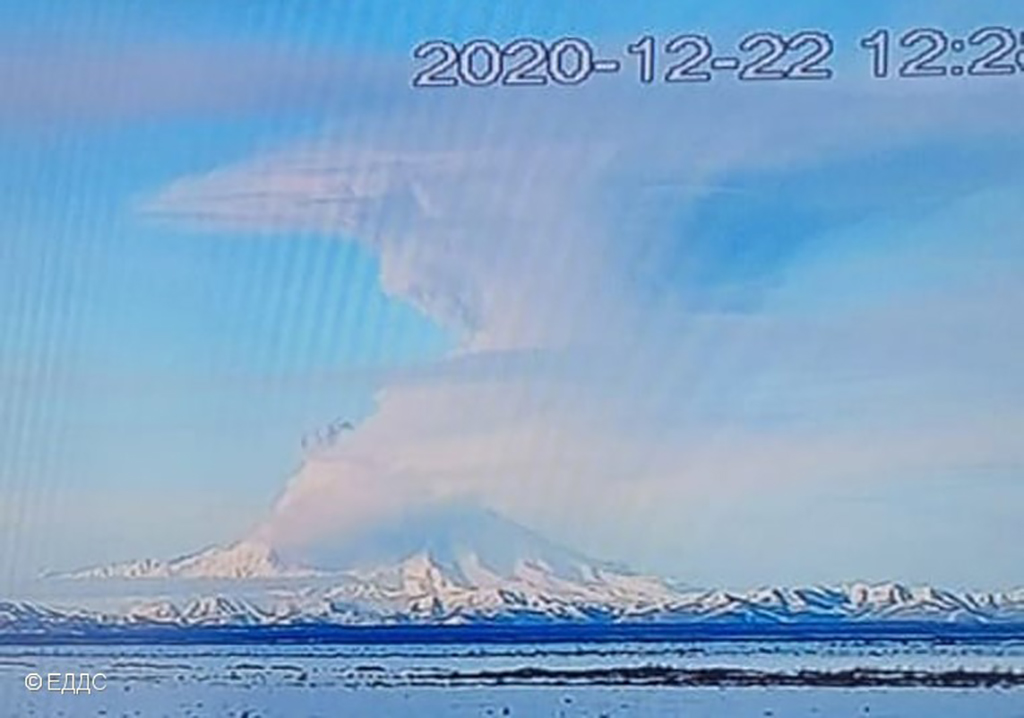 |
Figure 63. An explosive eruption at Sheveluch on 22 December 2020 is seen in this image from the south. Image courtesy of IVS FEB RAS, KVERT. |
Continued dome growth produced hot avalanches, thermal anomalies, and gas-and-steam plumes (figures 66 to 70) during January through May, with no explosive activity reported. The whaleback dome continued to grow vertically, forming a smooth top similar to that seen in November. Ash resuspended by winds on 2 April created an ash plume that reached 2.5 km altitude and extended 400 km ESE.
Throughout June activity remained the same, with dome growth, avalanches, and gas emission (figure 71). By 16 June the whaleback dome was about 200 m high and 170 m wide at the base, and was beginning to crumble, producing avalanches (figures 72 and 73).
Geological Summary. The high, isolated massif of Sheveluch volcano (also spelled Shiveluch) rises above the lowlands NNE of the Kliuchevskaya volcano group. The 1,300 km3 andesitic volcano is one of Kamchatka's largest and most active volcanic structures, with at least 60 large eruptions during the Holocene. The summit of roughly 65,000-year-old Stary Shiveluch is truncated by a broad 9-km-wide late-Pleistocene caldera breached to the south. Many lava domes occur on its outer flanks. The Molodoy Shiveluch lava dome complex was constructed during the Holocene within the large open caldera; Holocene lava dome extrusion also took place on the flanks of Stary Shiveluch. Widespread tephra layers from these eruptions have provided valuable time markers for dating volcanic events in Kamchatka. Frequent collapses of dome complexes, most recently in 1964, have produced debris avalanches whose deposits cover much of the floor of the breached caldera.
Information Contacts: Institute of Volcanology and Seismology, Far Eastern Branch, Russian Academy of Sciences (IVS FEB RAS), 9 Piip Blvd., Petropavlovsk-Kamchatsky 683006, Russia (URL: http://www.kscnet.ru/ivs/eng/); Kamchatka Volcanic Eruptions Response Team (KVERT), Far Eastern Branch, Russian Academy of Sciences, 9 Piip Blvd., Petropavlovsk-Kamchatsky, 683006, Russia (URL: http://www.kscnet.ru/ivs/kvert/); Kamchatka Volcanological Station, Klyuchi, Kamchatka Krai, Russia (URL: http://volkstat.ru/); MIROVA (Middle InfraRed Observation of Volcanic Activity), a collaborative project between the Universities of Turin and Florence (Italy) supported by the Centre for Volcanic Risk of the Italian Civil Protection Department (URL: http://www.mirovaweb.it/); Sentinel Hub Playground (URL: https://www.sentinel-hub.com/explore/sentinel-playground); Planet Labs, Inc. (URL: https://www.planet.com/).


